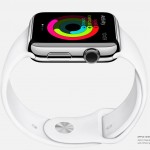“Until we get to a point where new sensors or algorithms enable prescriptive insights or the tracking of new datapoints such as blood pressure or glucose, consumers will likely gravitate towards the mid to value price points,” says IDC’s Jitesh Ubrani,
Apple was No,1 though held back by a temporary ban on certain watch models, and the lack of newer AirPods. Overall. Apple Watch shipments declined 19.1% y-o-y while hearables including AirPods and Beats declined 18.8% during the quarter.
AirPods. Overall. Apple Watch shipments declined 19.1% y-o-y while hearables including AirPods and Beats declined 18.8% during the quarter.
Xiaomi ranked second with 43.4% y-o-year growth thanks to the comparison with a 16% decline in the Q2 2023. The recent re-entry into Wear OS watches has helped the company become the third largest vendor within the Google ecosystem.
Huawei captured the third spot, surpassing Samsung, thanks to the return of its smartphone business, which had a positive impact on wearables due to bundling. However, the company’s sales are heavily concentrated in China with about three quarters coming from the region.
Samsung slipped into fourth place. The launch of the Galaxy Fit 3 as well as success with lower-priced hearables helped the company achieve market beating growth although its core smartwatch volume declined 5.1% during the quarter.
Imagine Marketing (boAt) was fifth. The Indian brand known for its extreme value-oriented products managed to grow its hearables volume by 17.5% but its smartwatches saw a decline of 61.3% due to extreme competition within the home country.
| Top 5 Wearable Device Companies by Shipment Volume, Market Share, and Year-Over-Year Growth, Q1 2024 (shipments in millions) | |||||
| Company | 1Q24 Shipments | 1Q24 Market Share | 1Q23 Shipments | 1Q23 Market Share | Year-Over-Year Growth |
| 1. Apple | 20.6 | 18.2% | 25.4 | 24.5% | -18.9% |
| 2. Xiaomi | 11.8 | 10.5% | 8.2 | 7.9% | 43.4% |
| 3. Huawei | 10.9 | 9.6% | 6.3 | 6.1% | 72.4% |
| 4. Samsung | 10.6 | 9.3% | 9.4 | 9.0% | 13.0% |
| 5. Imagine Marketing | 6.1 | 5.4% | 6.4 | 6.2% | -4.8% |
| Others | 53.1 | 46.9% | 48.2 | 46.4% | 10.1% |
| Total | 113.1 | 100.0% | 104.0 | 100.0% | 8.8% |
| Source: IDC Worldwide Quarterly Wearables Tracker, June 4, 2024 | |||||
